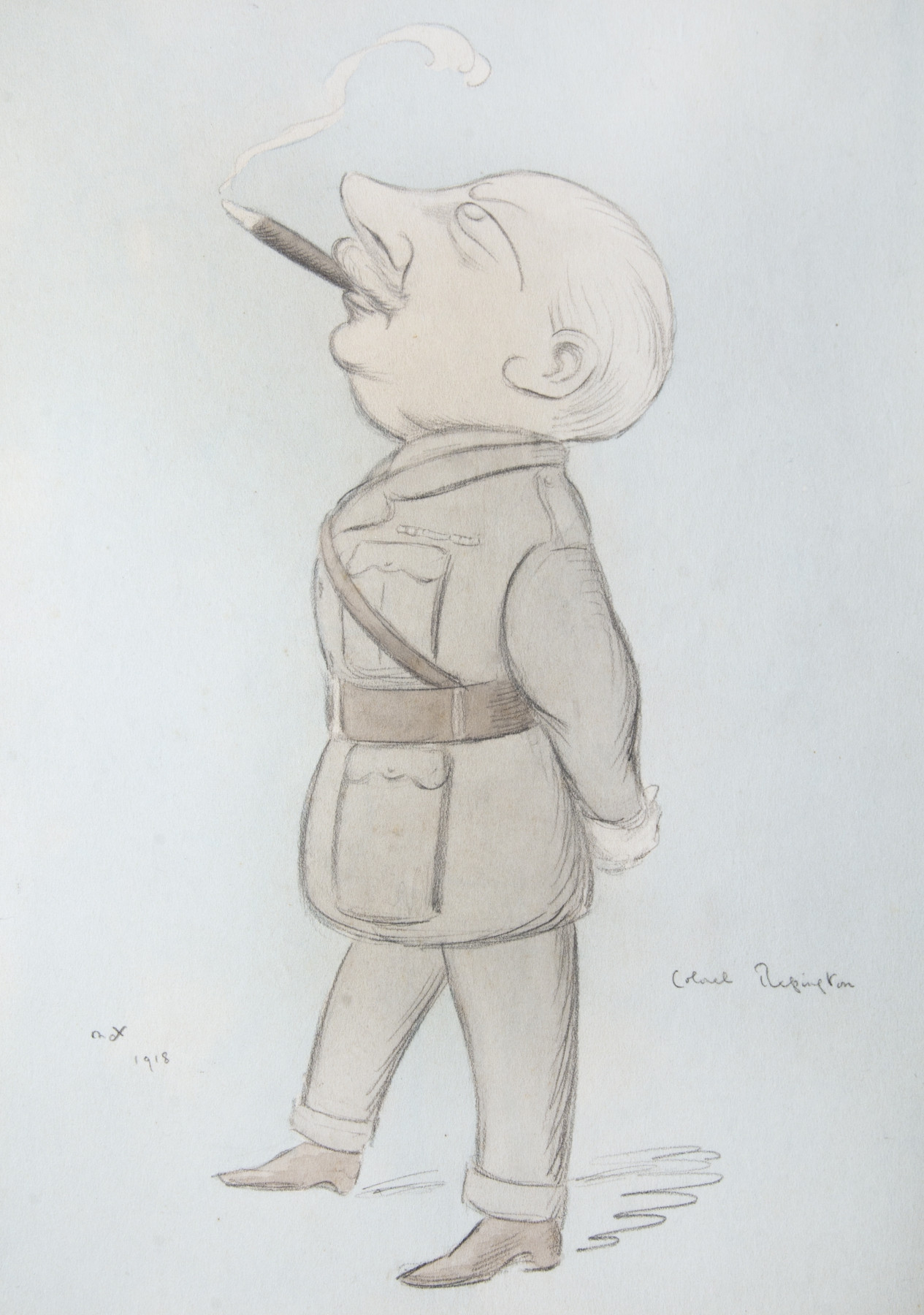
(click image to enlarge)
Colonel Repington
As the military correspondent for The Times during the First World War, Charles à Court Repington (1858-1925) was the most significant and important military journalist of the period. Extravagant and self-important, he referred to himself as ‘the most brilliant military writer of his day’ in his own epitaph. Repington was extremely well-connected, and his reporting influenced decisions at the very highest level, to the extent that he was sometimes referred to as ‘the twenty-third member of the cabinet’. In 1914, he had been the first to champion the appointment of Field Marshall Kitchener as Secretary of State for War, and the following year his reporting of the ‘shell scandal’, the shortage of artillery ammunition at the front, helped bring David Lloyd George to the position of Minister of
Munitions. In 1918, the year of Max Beerbohm’s caricature, Repington was sacked by The Times when the editor, Geoffrey Dawson, became exasperated with his continued stand against the War Cabinet.
In addition to his status as a formidable and influential journalist, Repington had also earned a reputation as a cad and a womaniser. A promising military career, during which he had been promoted to lieutenant-colonel and appointed CMG (Companion of the Order of St Michael and St George), had been cut short when a long-running affair with a married woman became public and forced his resignation in 1902. Though he blamed sabotage by a jealous rival, similar stories followed him throughout his journalistic career, as he became known as ‘the playboy of the Western Front’ and ‘the gorgeous Wreckington’.